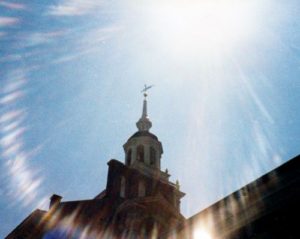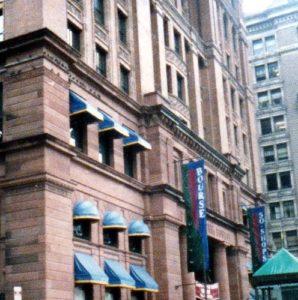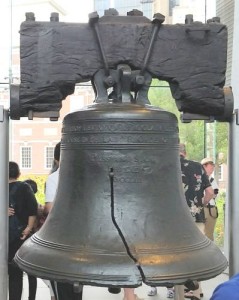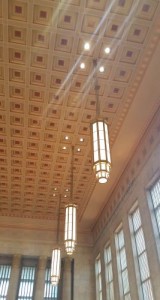I’m done with my big 2016 trips, so back to 1988.
I am kind of embarrassed to admit that I wasn’t really into history at this point in my life, so the thing that is causing me to stop and research rather than writing didn’t even register to me back then. Christ Church is the church that a number of prominent Philadelphians, including Benjamin Franklin, Betsy Ross, George Washington (once he was president), John Adams (likewise), and William Penn all worshiped here.
One problem, though. Ross and Penn were Quakers.
So here I am, trying to figure out why a bunch of Quakers were worshiping in an Anglican church. So far, I’ve been able to determine that Betsy Ross’s husband, John, was Anglican, and so she got expelled from the Quakers for marrying a non-Quaker. During the American Revolution, the Quaker meeting in Philadelphia splintered into two groups, one that believed that sticking to their pacifism was important, and one that believed that the revolution was a just war and that they had a duty to support it. Betsy was able to join this second group of Quakers, who dubbed themselves the Free Quakers.
William Penn is the real poser, though. He founded Pennsylvania because he was a Quaker. Quakers were outlawed in England and so he found Pennsylvania to be a place where Quakers would be free to practice their religion. So then he moved here and promptly started attending an Anglican church? It just doesn’t add up. Maybe the Quakers met at Christ Church (the Arch Street Friends meetinghouse wasn’t built until 1804)? I have a coworker who’s from Pennsylvania. Maybe she knows. I’ll try to remember to ask her.
So I did ask my coworker and she didn’t know that William Penn had attended an Anglican church, so that’s a dead end. I guess we’ll just have to leave that as a head-scratcher. If I ever do find an answer, I’ll let y’all know.
After we left the church, we wandered around in the Burial Ground for a while. The website for the church says that there are currently 1,400 markers and that over 5,000 have disappeared. So this little burial ground, just two acres in area, contains over 6,000 graves.
Next up: Fairmount Park, Baltimore’s Inner Harbor, and the realization that I need to dig out that photo album and rescan the final five pictures.




